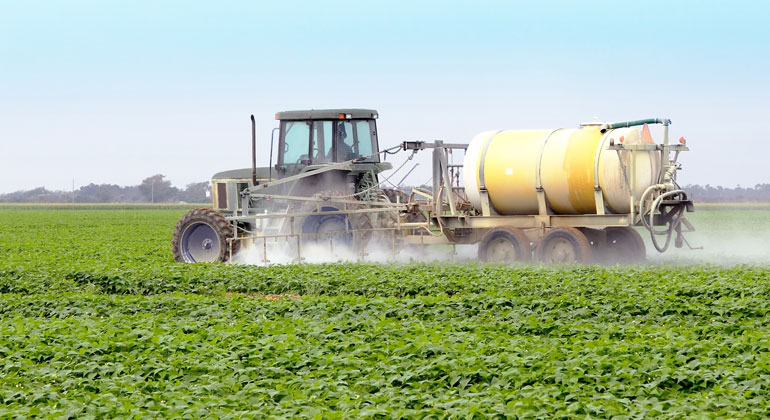Global food production poses an increasing climate threat
According to the authors of a new study published in Nature, rising nitrous oxide emissions are putting reaching climate goals and the objectives of the Paris Agreement in jeopardy.
The growing use of nitrogen fertilizers in the production of food worldwide is increasing concentrations of nitrous oxide in the atmosphere—a greenhouse gas 300 times more potent than carbon dioxide and which remains in the atmosphere longer than a human
lifetime.
The study, which was undertaken by an international consortium of 57 scientists from 14 countries and 48 research institutions, with IIASA in a key role, was led by Auburn University Alabama, USA under the umbrella of the Global Carbon Project and the International Nitrogen Initiative. The researchers’ objective was to produce the most comprehensive assessment to date of all sources and sinks of the potent greenhouse gas nitrous oxide.
The findings point to an alarming trend affecting climate change: Nitrous oxide has risen 20% from pre-industrial levels and its growth has accelerated over recent decades due to emissions from various human activities.
“The dominant driver of the increase in atmospheric nitrous oxide comes from agriculture, and the growing demand for food and feed for animals will further increase global nitrous oxide emissions,” explains study lead author Hanqin Tian, director of the International Center for Climate and Global Change Research at Auburn University’s School of Forestry and Wildlife Sciences and Andrew Carnegie Fellow. “There is a conflict between the way we are feeding people and stabilizing the climate.”

The study also determined that the largest contributors to global nitrous oxide emissions come from East Asia, South Asia, Africa, and South America. Emissions from synthetic fertilizers dominate releases in China, India, and the US, while emissions from the application of livestock manure as fertilizer dominates releases in Africa and South America, the study found. The highest growth rates in emissions are found in emerging economies, particularly Brazil, China, and India, where crop production and livestock numbers have increased. The most surprising result of the study was, however, that current trends in nitrous oxide emissions are not compatible with pathways consistent to achieve the climate goals of the Paris Agreement.
“Current emissions are tracking global temperature increases above 3°C, twice the temperature target of the Paris Agreement,” said study coauthor Robert Jackson, a professor and coauthor from Stanford University and chair of the Global Carbon Project.
According to study coauthor Wilfried Winiwarter, a senior research scholar in the IIASA Air Quality and Greenhouse Gases Program and former director of the International Nitrogen Initiative’s European center, opportunities to reduce nitrous oxide emissions do however exist.
“Europe is the only region in the world that has successfully reduced nitrous oxide emissions over the past two decades,” he says. “Industrial and agricultural policies to reduce greenhouse gases and air pollution and to optimize fertilizer use efficiencies have proven to be effective. Still, further efforts will be required, in Europe as well as globally.”
“This study shows that we now have a comprehensive understanding of the nitrous oxide budget, including climate impacts,” adds study co-lead Rona Thompson, a senior scientist from the Norwegian Institute for Air Research. “We are able to assess and quantify measures to reduce nitrous oxide emissions, and many of these measures will also improve water and air quality, benefiting both human health and ecosystems.”
Study co-leader Josep “Pep” Canadell, chief scientist in the Climate Science Center at the Australia-based Commonwealth Scientific and Industrial Research Organisation and executive director of the Global Carbon Project, agrees that the research is significant and urgent.
“This new analysis calls for a full-scale rethink in the ways we use and abuse nitrogen fertilizers globally and urges us to adopt more sustainable practices in the way we produce food, including the reduction of food waste,” he notes. “These findings underscore the urgency and opportunities to mitigate nitrous oxide emissions worldwide to avoid the worst of climate impacts.”
Adapted from a press release prepared by Auburn University, Alabama, USA.
- Tian H, Xu R, Canadell JG, Thompson RL, Winiwarter W, Suntharalingam P, Davidson EA, Ciais P, et al. (2020). “A comprehensive quantification of global nitrous oxide sources and sinks” Nature DOI: 10.1038/s41586-020-2780-0
Source
International Institute for Applied Systems Analysis (IIASA) 2020








